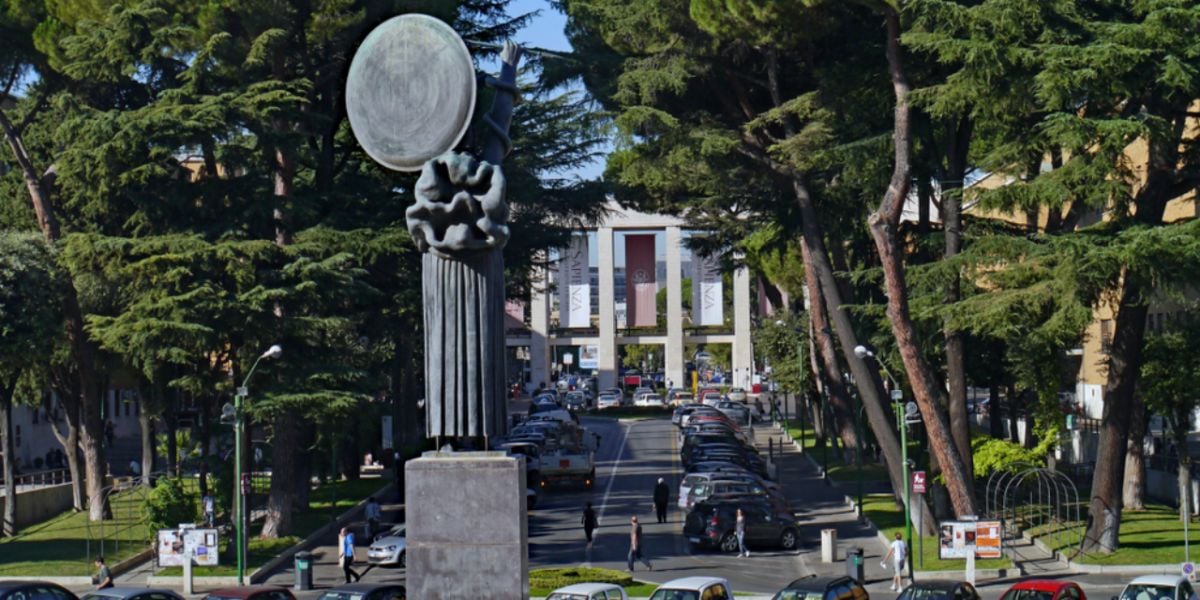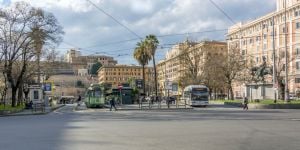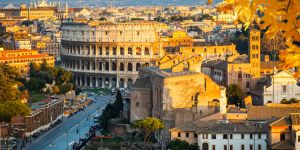
Many students around the world want to study in Rome because of its idyllic setting, culture, and history, not to mention its gastronomy, which make the Eternal City one of the most popular destinations in Italy. Rome is home to many prestigious universities, some of which are recognized worldwide for their excellence in teaching.
Before getting to the heart of the matter, you should know that if you wish to study in Rome, to do part of your university course there, or even to live an Erasmus experience, you need to be prepared. Indeed, to enroll in an Italian university, it is advisable to start the process at least nine months before the start of the academic year, in January. This implies that you have already identified the university of your choice. You should also take an Italian language test, usually between February and May.
Once the dates and deadlines have been set, get a timetable and prepare a backlog to give you an overview of the deadlines and formalities required.
Why study in Rome
Rome is a city of art, culture, gastronomy and architecture. It offers its students a privileged natural setting if they study in one of these areas. You will be living in an open-air museum 24 hours a day. The universities in Rome are numerous, offer a wide range of courses and are world-renowned. In addition, there are many exchanges between European and non-European students. Compared to other European cities, the cost of living in Rome is quite reasonable (even compared to Milan, Italy's most expensive city).
However, you may encounter a language barrier during your course or your preparation. English is not the forte of Romans, so you must have at least some knowledge of Italian. This will also help you in your everyday life in Rome. In addition, from an administrative point of view, be patient; the system lacks a bit of organization. This can cause delays in the process.
Higher education in Rome
The Italian academic framework differs slightly from that of many European countries. Studies are more like a seminar, a lengthy research project where the student is required to do a lot of personal work. Attendance is sometimes optional (depending on the faculties and subjects), and examinations are mainly oral and are the culmination of the course. Students have to act responsibly from the start and must therefore manage their course programs almost autonomously. This methodology is generally the norm throughout Italy.
Before enrolling in an Italian university, take the time to seek all the necessary information from your university and check that your course of study allows for an exchange. Then contact the international/Erasmus department of the institution of your choice. Whether you want to start a bachelor's degree, a master's degree, an internship, or a doctorate, every university in Rome has numerous exchange programs with many institutions around the world.
The Italian university system
In Rome, as elsewhere in Italy, the academic system is aligned with the European model and offers three study cycles:
- the laurea triennale (Bachelor's degree), which lasts three years;
- laurea magistrale (Master) of two years, accessible only after the laurea triennale;
- il dottorato (Doctorate), which lasts three years and can be accessed after a complete 3 2 cycle and a competitive examination.
There are also other cycles that are specific to the Italian higher education system, such as the Masters of specialization and the post-laurea courses.
Italian universities are often referred to as ateneo (from the Latin Athenaeum), and you will read or hear this word often during your expatriation. Universities are divided into public and private sectors. You will recognize the public institutions by the term used, Università degli Studi (di Milano, di Roma, etc.). Fees vary greatly, depending on whether you choose a public or private university, sometimes reaching €15,000 per year for the latter. In Rome, this is the case for the Luiss, Libera Università Internazionale degli Studi Sociali Guido Carli.
La Sapienza, Rome's historic university
La Sapienza is one of the world's oldest universities, founded in 1303, and is considered the best university in Italy. This Roman institution is made up of 11 faculties and one school with special status:
- Faculty of Architecture;
- Faculty of Economics;
- Faculty of Pharmacy and Medicine;
- Faculty of Law;
- Faculty of Humanities and Philosophy;
- Faculty of Civil and Industrial Engineering;
- Faculty of Information, Statistical and Computer Engineering;
- Faculty of Medicine and Dentistry;
- Faculty of Medicine and Psychology;
- Faculty of Political, Sociological and Communication Sciences;
- Faculty of Mathematical, Physical and Natural Sciences;
- School of Aerospace Engineering.
Almost all international students in Rome are enrolled in this university, whose largest pole is in the San Lorenzo district, but it is, in fact, scattered throughout the city of Rome and also in Lazio as far as Latina. In particular, Erasmus students can come here for a year.
The average tuition fees for the academic year 2020/21 were €1,400 (Ministry of University and Research, MIUR).
Other public universities in Rome
Besides La Sapienza, Rome is full of faculties and colleges that offer equally excellent teaching and the opportunity for international students to study (part of) their university course in Rome.
Tor Vergata University, or Roma II: Founded in 1982, Tor Vergata is famous for the quality of its teaching in economics, medicine and engineering. Due to the high demand at La Sapienza, Tor Vergata was built to compensate for the overcrowding at its predecessor. It was designed as an Anglo-Saxon university campus and covers an area of 600 hectares. It is a real city within the city. The university has a high level of international activity and promotes exchanges and research. The average tuition fee for the academic year 2020/21 was €1,700 (MIUR).
University of Rome III: The third university of Rome was founded in 1992 and has 13 faculties offering Bachelor's, Master's, Doctoral and specialization courses. Students can take courses in the faculties of architecture, economics, education, engineering, humanities, law, mathematics, natural sciences and political science. Despite its recent creation, Roma III is a university well-established in its urban environment (it renovates and transforms old buildings for research purposes) and oriented towards the world of work. The average tuition fee for the academic year 2020/21 was €1,200 (MIUR).
The Foro Italico: This fourth university, also called Roma IV, hosts the Higher Institute of Physical Education and the University Institute of Motor Sciences. It is here that any student wishing to specialize in sports and the teaching of human body movement will study. The average tuition fees for the academic year 2020/21 were 1.200€ (MIUR).
Autonomous universities and colleges in Rome
Students wishing to study at a private university in Rome can apply to the large private institutions, for example, Campus Bio-Medico, a non-state university, which is also a leading polyclinic specializing in biomedical sciences. The Faculty of Medicine offers a 6-year degree in medicine, a 3-year degree in nursing and dietetics and a 5-year degree in biomedical engineering. These qualifications are valid in Italy and abroad.
Among the private universities, there is also the Facoltà di Economia, part of the Luiss Guido Carli (Libera Università degli Studi Sociali Guido Carli). This autonomous university has two other faculties: law and political science. It is known for its highly selective entrance exam and easy access to the world of work after studies, being more focused on the professional than the academic.
There is also the LUMSA University, the Libera Università Maria Santissima Assunta, a non-state institution of Catholic inspiration. Founded in 1939, it is the second oldest university in Rome, after La Sapienza. It is famous for its Law, Economics and Political Science courses.
The art world also has its schools in Rome: the National Academy of Dramatic Art, the Higher Institute for Artistic Industries (ISIA Roma Design), but also the world of fashion with the prestigious Accademia del Lusso, as well as the Accademia Costume e Moda, also present in Milan.
Finally, John Cabot University in Rome offers an American bachelor's degree as well as higher education degrees such as international relations, economics, marketing, history, various sciences, or philosophy, based on the American model of education.
Applying to a university in Rome
Each Italian university has its own application rules, so you should check the website of the institution you are interested in or contact their international or Erasmus departments. In addition, there are different registration rules for non-EU students, Italians and EU students.
EU students do not need a visa to study in Italy. However, diplomas obtained abroad must be legalized according to Italian law. Each document must be accompanied by an official translation into Italian and presented to an Italian diplomatic-consular representation. The Italian embassy or consulate will provide a declaration of value (Dichiarazione di valore), confirming that the grades are equivalent to the Italian education system. Once in Italy, students must enroll directly at the university.
Non-EU students must enroll (online or in person, or by pre-registration) in advance, especially as the procedures are lengthy. Once the application has been accepted, non-EU citizens residing abroad must submit a visa application to the Italian diplomatic representation (embassy, consulate) in the country of origin (where the Dichiarazione di valore must be made).
All documentation must be translated by a state-approved translator and notarized.
Once the visa is in hand, students must go personally to the university to register (Immatricolazione) and then apply for the long-term residence permit (Permesso di soggiorno a motivo di studio) within eight days of their arrival in Italy. This permit is renewable every year and can be renewed for another year after graduation if they want to get a job in Italy. It is advisable to register at the University, to ask for the tax code and to register with the Italian health services (Servizio Sanitario Nazionale) before applying for the Italian residence permit, as all these documents help to speed up the procedure.
Financing your studies in Rome
Italian universities set fees according to students' family income (ISEE). Students enrolled in public universities can apply for a DSU (Diritto allo studio) grant financed by the Lombardy Region from the Grants Office.
These grants allow free access to university canteens, provide a €5 voucher (or the equivalent of a meal ticket) per day for commuter students to spend in certain supermarkets, and cover part of the student's expenses.
To qualify for a scholarship in Italy, the conditions are as follows:
- submit a family income declaration which must be low/medium
- to have accumulated a minimum number of credits for the year (from 20 to 35, depending on whether it is a bachelor's or master's degree)
- not be receiving any other scholarships in the same year,
- be registered for full-time studies,
- not be enrolled in the same course for more than one year.
In addition, all universities offer opportunities for part-time paid employment in some academic departments.
Moving to Rome to study is not easy; it is a big city that can seem chaotic at first if you add to this the language barrier. In addition, the differences in teaching approach can be confusing for students used to other methods. However, it is an unforgettable and unique experience that will enrich your knowledge and complete your academic and personal curriculum. Rome is a unique city and the best way to discover it is to immerse yourself totally in Roman culture. As the saying attributed to Saint Ambrose of Milan in the 4th century goes: "In Rome, do as the Romans do".
We do our best to provide accurate and up to date information. However, if you have noticed any inaccuracies in this article, please let us know in the comments section below.








